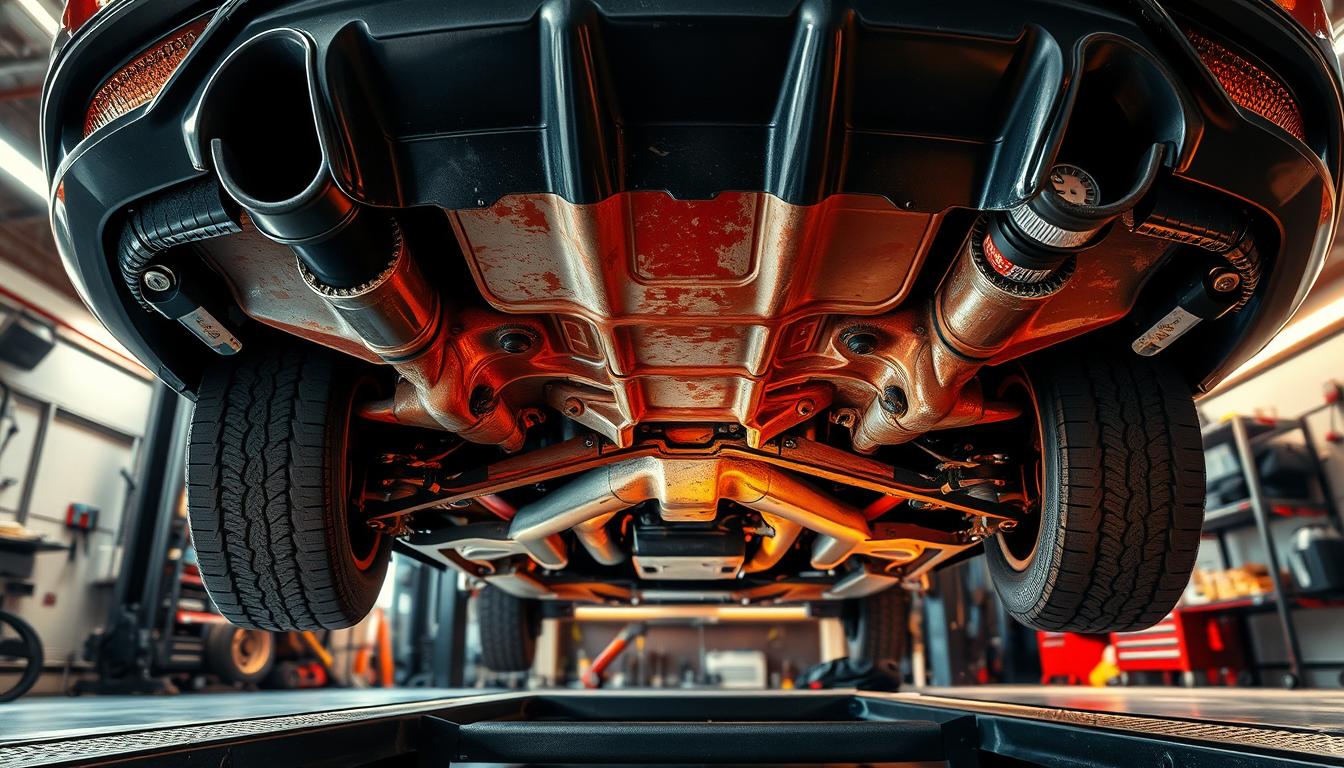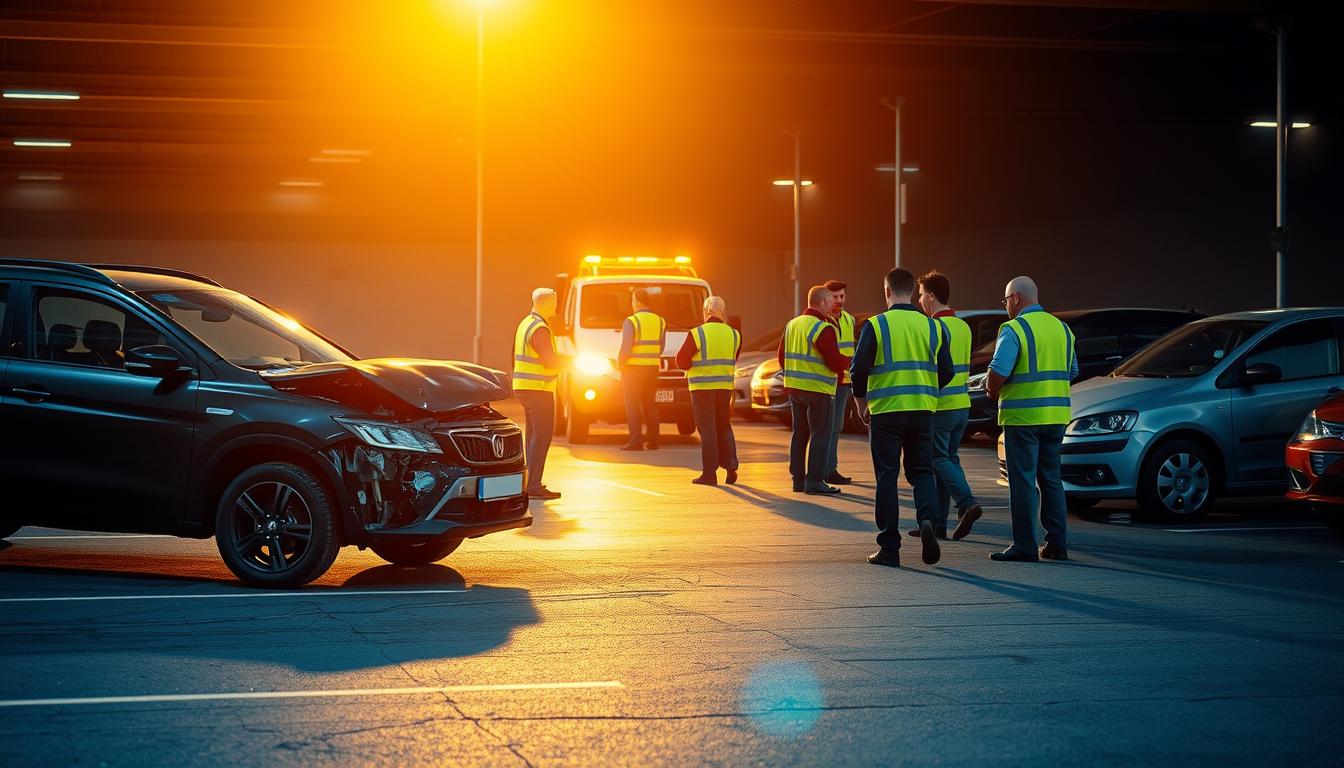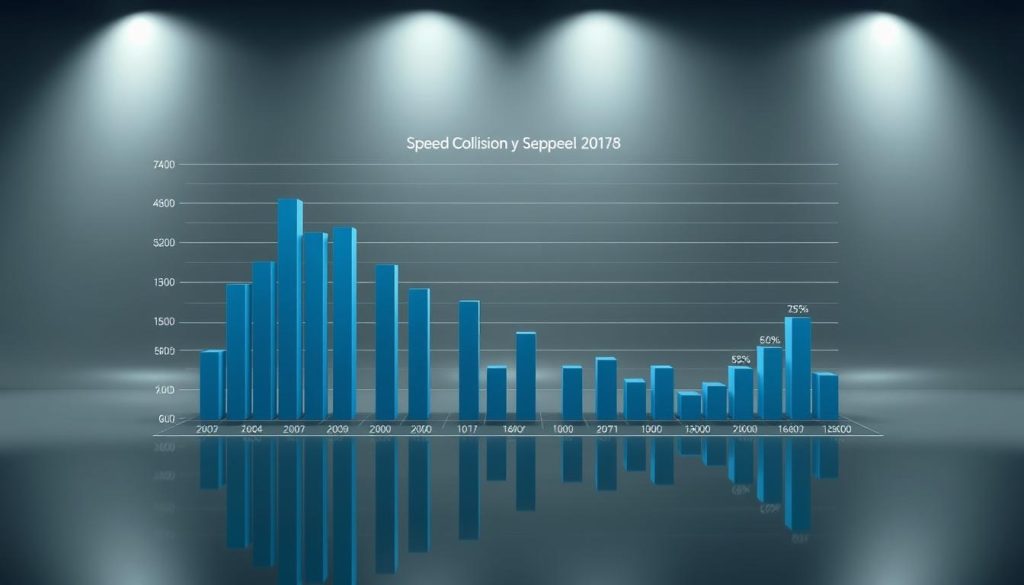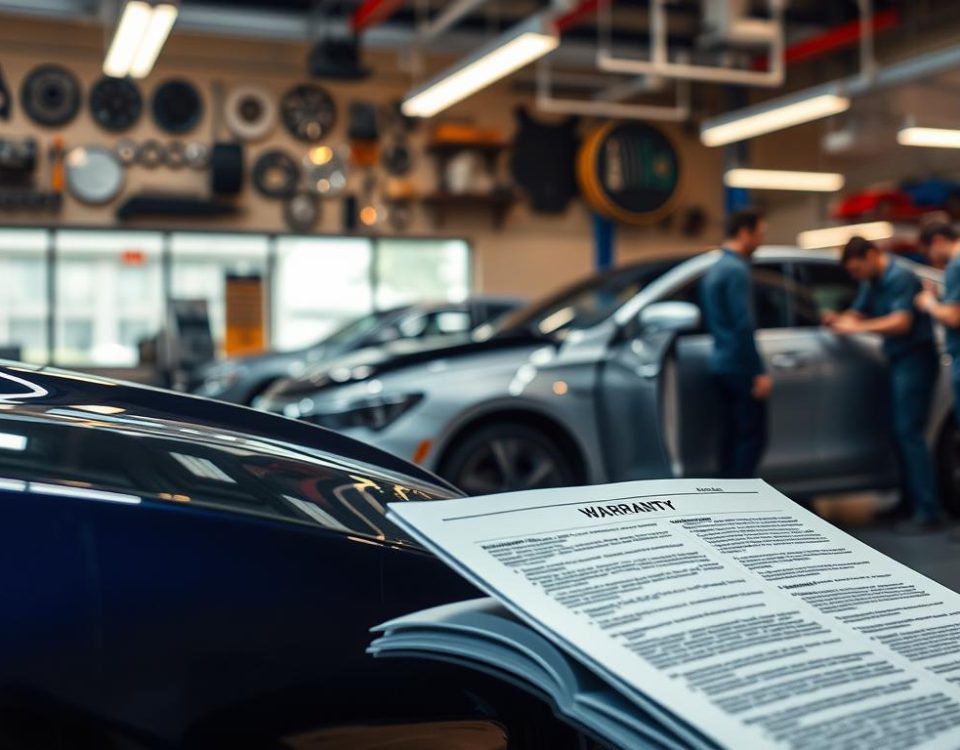
How to Prevent Rust After Collision Repair

What to Do If Your Car is Damaged in a Parking Lot
Speed is a big deal when we’re driving. It really matters in car crashes. The faster we go, the more damage and injuries happen.
Knowing this helps us drive safer. It might even save lives and lower repair costs.
Key Takeaways
- Speed significantly impacts the severity of collision damage.
- Understanding the relationship between speed and car crash consequences is vital.
- Higher speeds result in greater injury risks for all parties involved.
- Speed awareness can lead to safer driving decisions.
- Lowering speed may reduce repair costs after an accident.
Understanding Collision Dynamics
When we look at car crashes, we see many forces at work. Knowing about car crash physics helps us understand these crashes. Key ideas like momentum and kinetic energy are very important.
The Physics Behind a Car Crash
Car crashes involve many physical forces. Newton’s laws tell us how cars move when they hit. When cars crash, the force on people can be very strong.
Going faster makes the crash force even stronger. This shows why knowing about crashes is key for safety and car design.
How Speed Influences Kinetic Energy
Kinetic energy is very important in car crashes. As speed goes up, kinetic energy grows fast. This is why slowing down is so important.
A little bit faster can mean a lot more energy in a crash. This helps us see why safety features are so important.
Speed Limit Laws in the United States
Knowing about speed limit laws is key for drivers in the United States. These laws help keep our roads safe. They are set based on road types, traffic, and safety studies.
Speed limits do more than just control speed. They help cut down on accidents and make driving safer for all.
The Purpose of Speed Limits
Speed limits protect drivers, passengers, and pedestrians. Following these rules lowers the risk of crashes. The main reasons for these limits are:
- Keeping everyone safe on different roads.
- Lowering the risk of serious accidents by controlling speed.
- Teaching all drivers to drive safely.
Consequences for Exceeding Speed Limits
Breaking speed limit laws has big consequences. Knowing these can help us drive better. Some of these consequences are:
- Getting fined, with fines getting higher if you do it again.
- Being more likely to have an accident because you can’t react fast enough.
- Pay more for car insurance because of traffic tickets.
By knowing about speed limits and following them, we make our roads safer for everyone.
Common Misconceptions About Speed and Crashes
When we talk about road safety, we often get things wrong. Speed is a big part of many accidents, but it’s not the only one. Driver behavior also plays a big role in crashes. Knowing this helps us understand road safety better.
Speed Doesn’t Always Cause Accidents
Many think speeding is the main cause of car crashes. But, accidents can happen even when driving the speed limit. Weather, road quality, and other drivers’ actions matter a lot too. Studies show that not all crashes are because of speeding.
The Role of Driver Behavior
Driver behavior is key in causing accidents. Distracted driving, driving drunk, and being aggressive are common reasons. Learning about road safety helps us see that better driving can reduce risks. This changes how we think about keeping our roads safe.
The Severity of Damage at Different Speeds
Understanding how speed affects car accidents is key. Low-speed crashes and high-speed ones show big differences. Even small crashes can cause a lot of harm.
Low-Speed Collisions and Their Effects
Low-speed crashes happen in places like parking lots. They cause less damage, needing only small fixes. These crashes can lead to:
- Minor dents and scratches on body panels
- Damage mainly to bumpers and lights
- Potential for soft tissue injuries, though less severe
Even though they seem minor, low-speed crashes are common. They remind us to stay safe, even when driving slow.
High-Speed Collisions: A Closer Look
High-speed crashes are much more serious. They cause a lot of damage because of the speed. High-speed crashes can lead to:
- Severe structural damage to vehicles
- Higher risk of life-threatening injuries
- Greater potential for vehicle rollover
Speed matters a lot. A 10 mph crash might not hurt much, but a 60 mph crash can be deadly. This shows why we must follow speed limits and stay safe.
The Role of Safety Features in Modern Cars
Today’s cars have cool tech to keep us safe. They have special features to help in crashes, even at high speeds. These features help stop accidents and lessen damage if they happen.
How Technology Mitigates Speed Impact
Speed can be dangerous. But, new tech helps make driving safer. Here’s how:
- Advanced airbag systems that deploy fast to protect us.
- Crumple zones that soak up crash energy, keeping us safe.
- Automatic emergency braking that stops the car before a crash, saving us.
These new safety tools are a big step forward. They show us how tech can help control speed risks.
Importance of Regular Maintenance
Keeping safety features working is key. Regular car checks are important. Here’s why:
- Check airbag systems to make sure they work.
- Look at brakes often to see if they need fixing.
- Keep tires in good shape for better car control.
Regular car care boosts safety tech. It keeps us and our families safe on the road.
Real-Life Statistics on Speed and Collisions
Looking at speed collision statistics shows how speed affects road safety. The National Highway Traffic Safety Administration (NHTSA) gives us important info. This info helps us understand the dangers of speeding and how to drive safer.
National Highway Traffic Safety Administration Data
The NHTSA collects data on speed-related accidents. They found that many fatal crashes are caused by speeding. This NHTSA data shows that higher speeds mean more serious accidents. For example:
- About 26% of all traffic fatalities in the U.S. were speed-related.
- When speeds are over 20 miles per hour above the limit, the risk of serious injury goes up a lot.
This shows why it’s key to follow speed limits to prevent crashes and save lives.
Case Studies on Accident Severity
Studies on accident severity show how speed changes accident outcomes. Looking at these examples helps us see the dangers of speeding. For example:
- A study found that a crash at 30 miles per hour had a 40% chance of serious injury. But at 20 miles per hour, the chance was only 10%.
- Another study showed that speeding crashes often cause more severe injuries for drivers and pedestrians.
These studies prove the dangers of speeding. They also show why we need to drive responsibly.

The Psychological Effects of Speeding
Speeding is a big deal for many drivers. It’s about the thrill and feeling safe. We love the rush but forget the dangers.
Perception of Speed Among Drivers
How we see risk while driving matters a lot. We think we can handle fast speeds. But this isn’t always true.
Things that change how we see risk include:
- Experience behind the wheel
- Previous encounters with law enforcement
- Influence from peers who engage in speeding
The Thrill vs. the Risk: Our Mindset
Speeding gives us a rush, making us feel free. But, it’s risky. We must think about the dangers.
Knowing the risks can help us drive safer. Let’s focus on safe driving for everyone’s safety.
Strategies to Reduce Speed-Related Accidents
We need to make our roads safer. We can do this by using smart strategies. These help lower the risk of accidents caused by speeding. We also need to spread the word and highlight the role of police.
Community Awareness Programs
Community programs are key to stopping speed-related accidents. They teach drivers about the dangers of speeding. This helps drivers make safer choices.
There are many ways to do this:
- Workshops on the impacts of excessive speed.
- School-based initiatives teaching young drivers about road safety.
- Outdoor events promoting campaigns like “Slow Down, Save Lives.”
The Role of Law Enforcement
Police play a big part in keeping us safe. They watch the roads and make sure everyone follows the speed limit. They also give tickets to those who speed.
Police work helps keep us safe. They team up with community groups to make their efforts stronger.
Collisions and Repair Costs
Understanding the money side of car crashes is key. The link between speed and repair costs is strong. Faster crashes usually mean more damage and higher repair bills.

How Speed Affects Repair Expenses
Speed’s impact on repair costs is clear. High-speed crashes cause more damage. A small crash might cost little, but a fast one can cost a lot for repairs.
Here’s why repair costs go up:
- More damage to the car’s body.
- Hidden internal damages are more likely.
- Fixing the car takes longer.
Insurance Implications After a Hard Hit
Speed matters a lot when dealing with insurance. Fast accidents can raise our premiums. Here’s what to know:
- Fast accidents make insurers see us as riskier.
- Expensive repairs can raise our premiums later.
- Knowing our insurance helps avoid unexpected costs.
Knowing these things helps us make smart choices about our car insurance. It can also protect our money after a crash.
Trust Miracle Body and Paint for Collision Repairs
Choosing the right service for collision repairs is very important. At Miracle Body and Paint, we focus on quality and precision. We aim to make your vehicle look new again.
We have two locations for your convenience. Our skilled team uses the latest tools for repairs. We pay attention to every detail to make sure you’re happy.
Need reliable collision repairs? Miracle Body and Paint is here for you. Contact us to see our commitment to quality. Let us help you with confidence.



